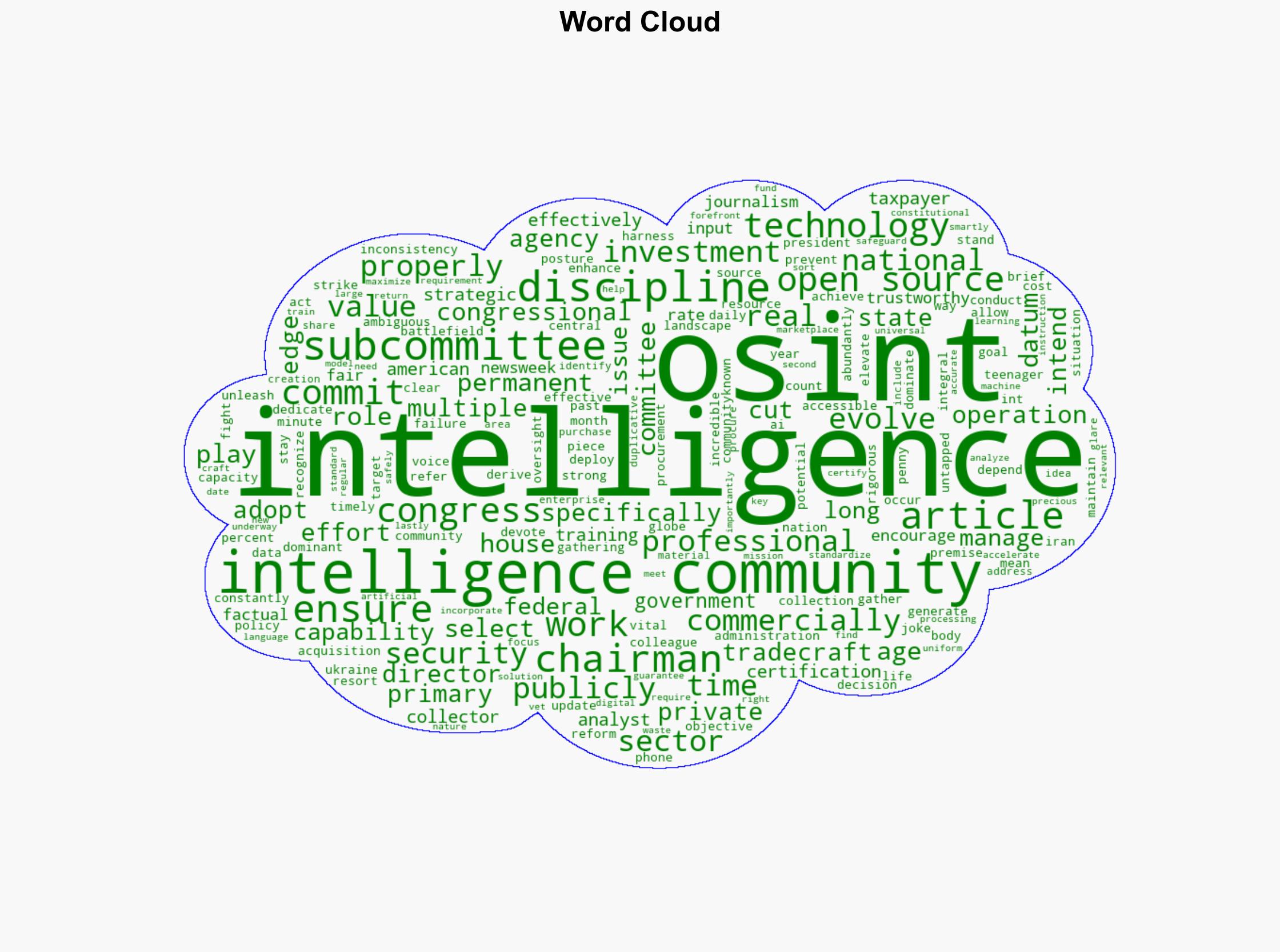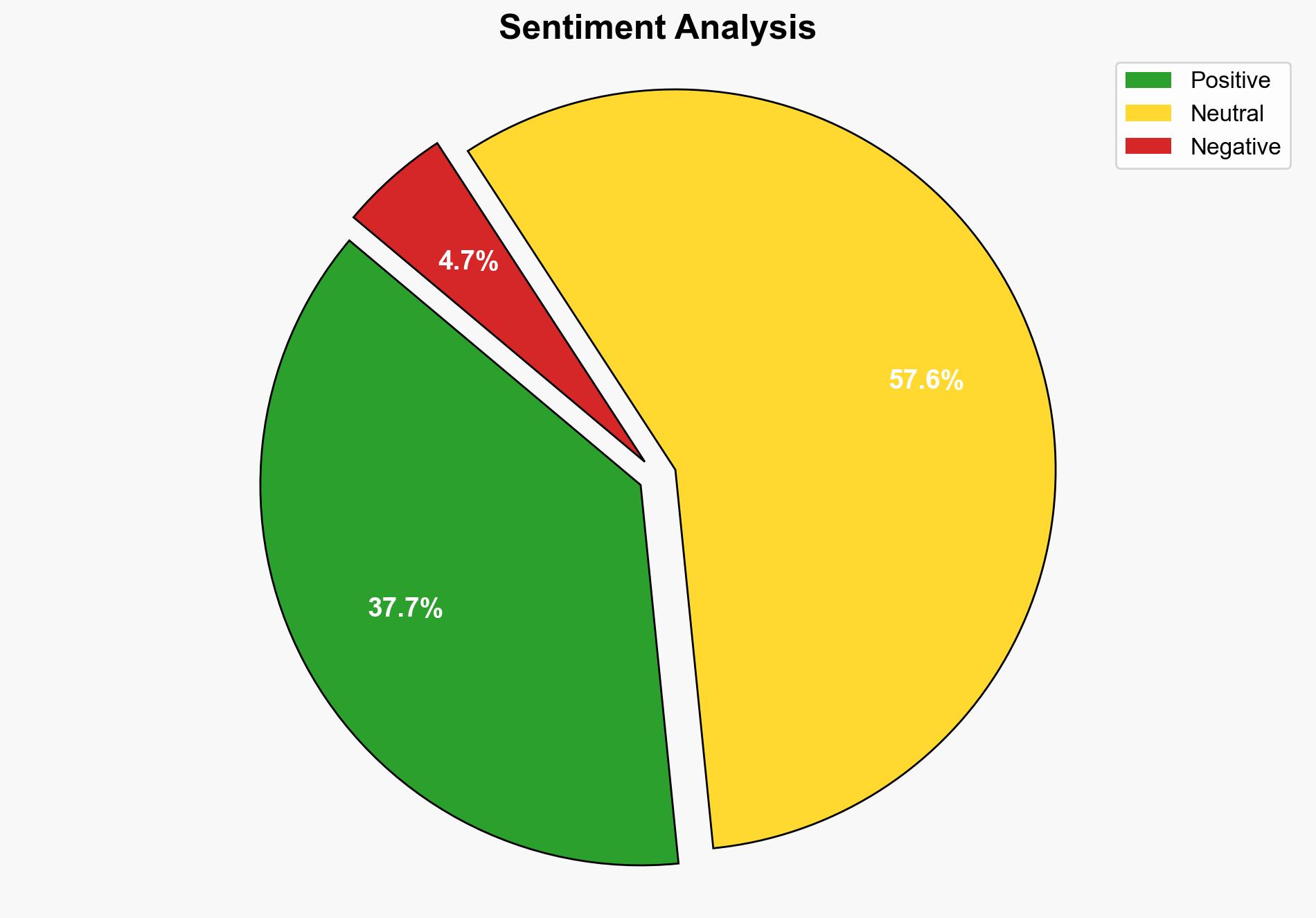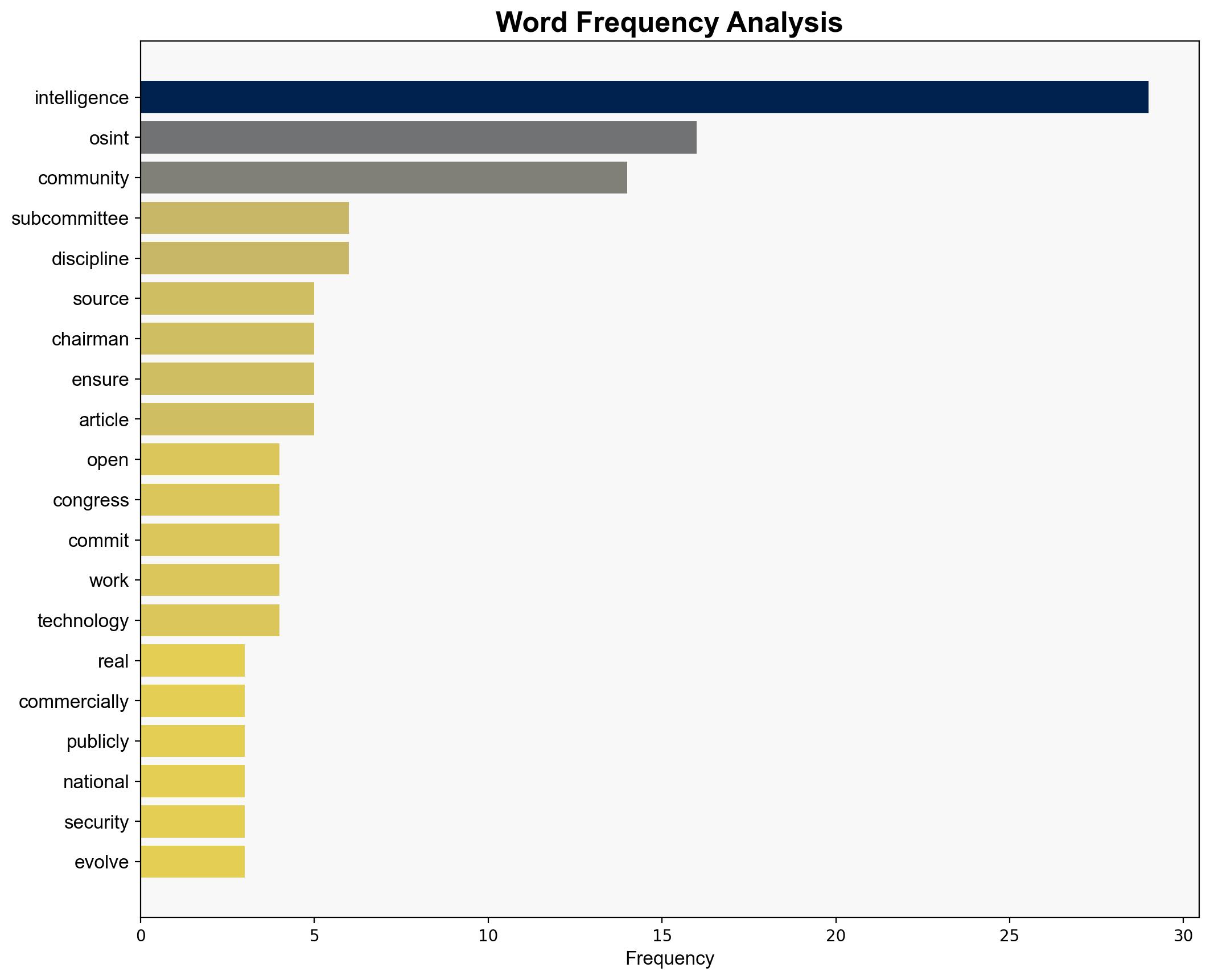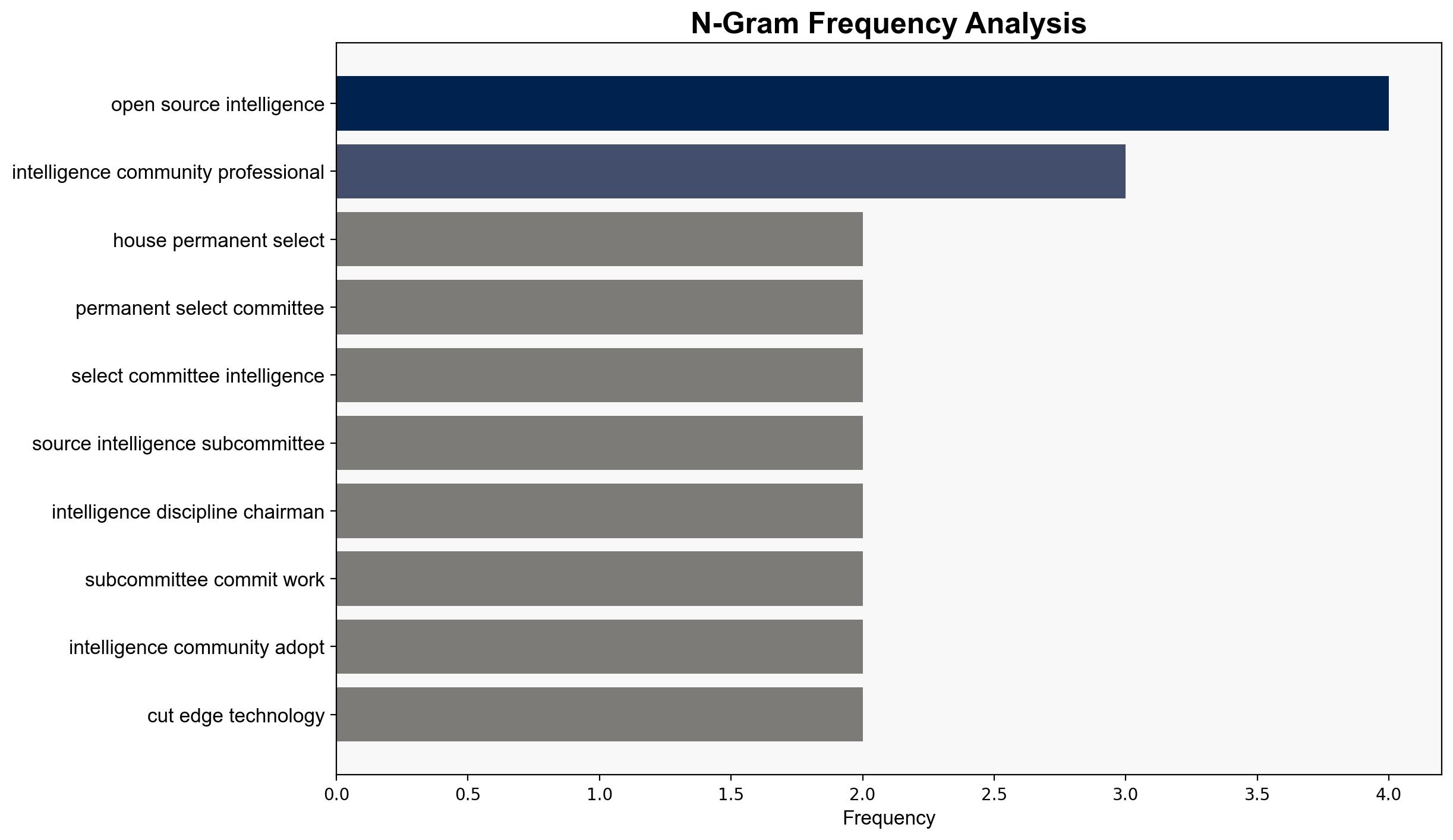Why Open-Source Intelligence OSINT Must Be a Cornerstone of US National Security Opinion – Newsweek
Published on: 2025-08-11
Intelligence Report: Why Open-Source Intelligence OSINT Must Be a Cornerstone of US National Security Opinion – Newsweek
1. BLUF (Bottom Line Up Front)
The most supported hypothesis is that OSINT should be elevated as a primary intelligence discipline within the US national security framework due to its cost-effectiveness, accessibility, and potential for innovation. Confidence Level: Moderate. It is recommended that the intelligence community prioritize the integration of OSINT capabilities by establishing a dedicated framework for its development and application.
2. Competing Hypotheses
Hypothesis 1: OSINT should be a cornerstone of US national security due to its cost-effectiveness, accessibility, and ability to enhance decision-making across multiple intelligence sectors. This hypothesis is supported by the argument that OSINT can provide timely and relevant information, which is crucial in rapidly evolving geopolitical landscapes.
Hypothesis 2: OSINT, while valuable, should remain a supplementary intelligence discipline rather than a primary one. This hypothesis suggests that the reliance on OSINT could lead to vulnerabilities, such as misinformation and data overload, which could undermine national security efforts.
3. Key Assumptions and Red Flags
Assumptions:
– OSINT can be effectively integrated into existing intelligence frameworks without significant disruption.
– The intelligence community can develop the necessary technological and human resources to harness OSINT effectively.
Red Flags:
– Potential over-reliance on OSINT could lead to neglect of traditional intelligence methods.
– The risk of misinformation and data manipulation in open-source platforms.
– Lack of standardized training and certification for OSINT professionals could lead to inconsistent application.
4. Implications and Strategic Risks
The integration of OSINT as a primary discipline could enhance the agility and responsiveness of the intelligence community. However, it also poses risks such as increased exposure to cyber threats and the challenge of managing large volumes of data. Geopolitically, reliance on OSINT could shift intelligence priorities and resource allocation, potentially affecting traditional intelligence operations.
5. Recommendations and Outlook
- Develop a comprehensive OSINT framework that includes standardized training, certification, and integration protocols.
- Invest in advanced technologies, such as AI and machine learning, to enhance OSINT data processing and analysis.
- Scenario Projections:
- Best Case: Successful integration of OSINT leads to improved intelligence capabilities and national security outcomes.
- Worst Case: Over-reliance on OSINT results in intelligence failures due to misinformation and data mismanagement.
- Most Likely: Gradual integration of OSINT enhances intelligence operations, but challenges in standardization and training persist.
6. Key Individuals and Entities
– Chairman of the OSINT Subcommittee
– Director of National Intelligence
– Director of the Central Intelligence Agency
7. Thematic Tags
national security threats, cybersecurity, counter-terrorism, regional focus





